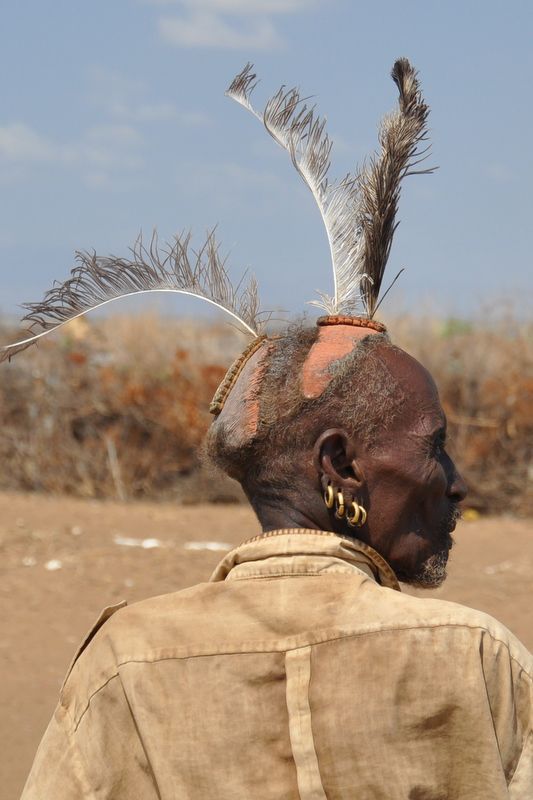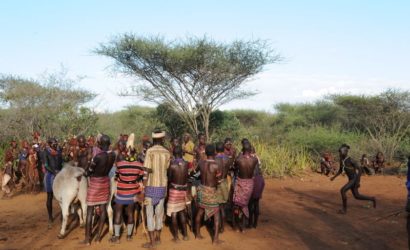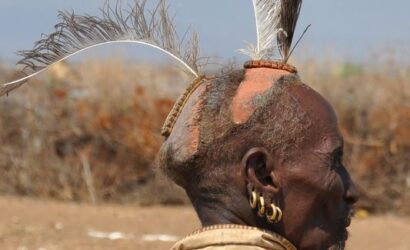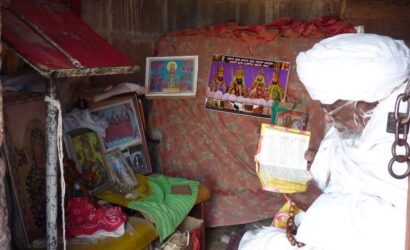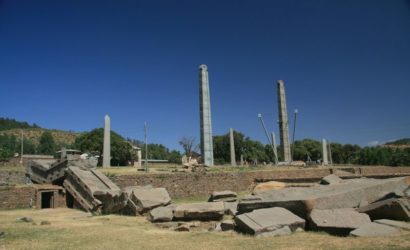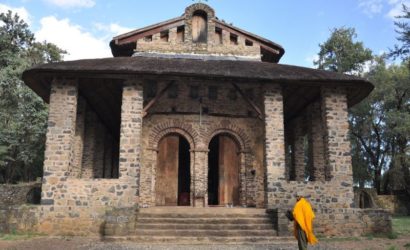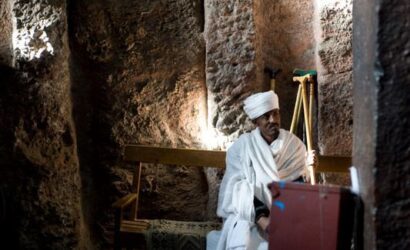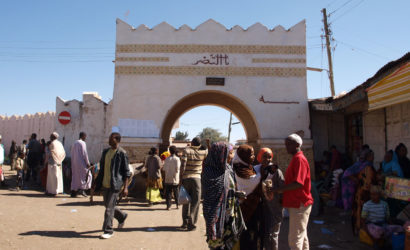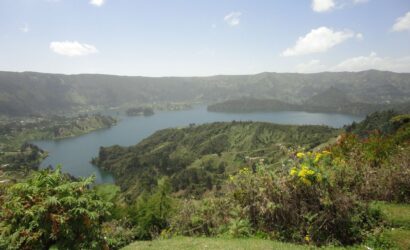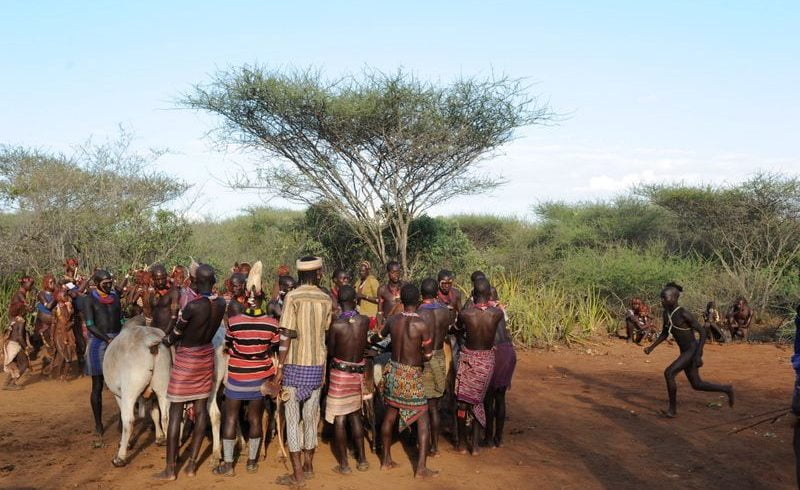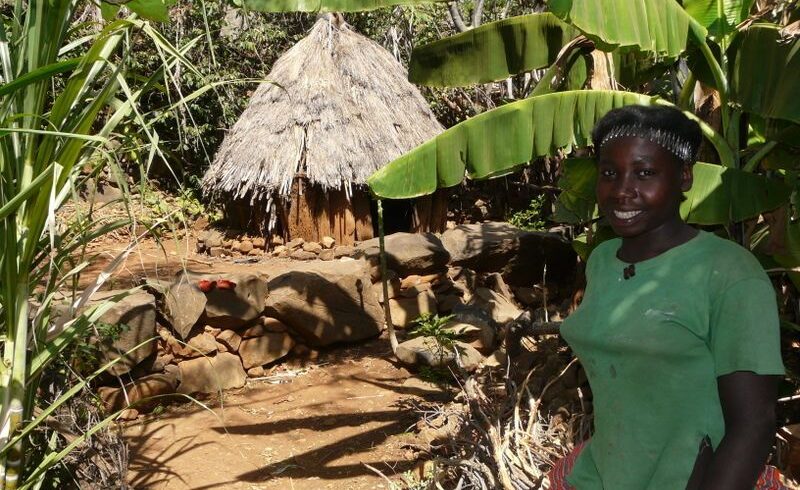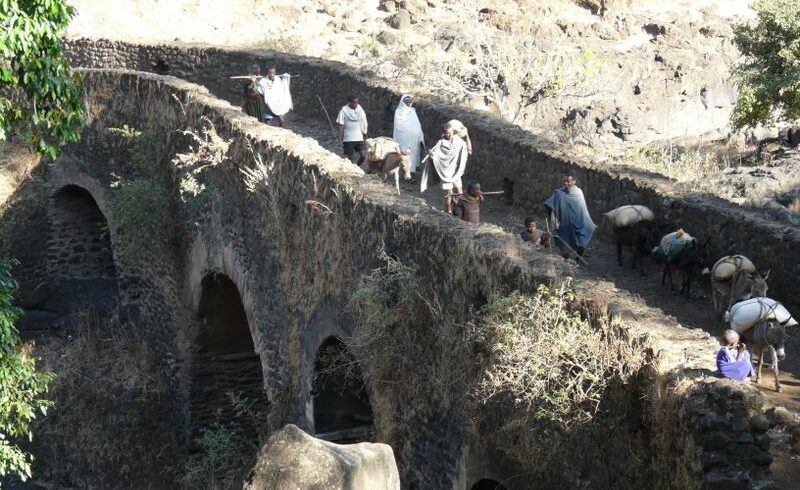This is a perfect balanced itinerary to meet different ethnic groups in the south. Meanwhile you can enjoy the natural beauty of this part of the country. To be at the markets at the right time we have to keep an eye on which day it is.
Itinerary
Day 1 :
(Mo) Addis Ababa
We will meet you at the airport and take you to your hotel for check-in. The first day we spent in the fascinating capital of the country: Addis Ababa. Depending on your time of arrival we take you on a half day or full day city tour visiting some sites of your choice like the Ethnographic Museum, National Museum, Trinity Cathedral, Mercato (the largest market of Africa) or the Entoto Hills just outside Addis Ababa.
Day 2 :
(Tu) Addis Ababa - Arba Minch, 455 km/ ~8,5 hrs
This day we will have a full but interesting day driving. We travel through the rolling fertile hills along the Butajira Road and then down to the acacia savanna on the bottom of the Rift Valley. We pass the historical sites of Melka Kunture, Adadi Maryam an Tiya. A brief visit to one of these sites is possible.
Day 3 :
(We) Arba Minch (visit Dorze and Nech Sar NP)
In about one hour we travel the 28 km from Arba Minch at an altitude of 1400 m to the highland village of Dorze at 2600 m enjoying beautiful vistas over Lake Abaya and Lake Chamo on the way. We visit the Dorze people in their famous beehive like huts and see the preparation of their staple food made of false banana. Of course we try their food. After a relaxing lunch we depart for a boat trip on Lake Chamo and have a good chance to come up close with most probably the biggest crocodiles you have ever seen. Many (water) birds and hippopotamus are also easily found.
Day 4 :
(Th) Arba Minch - Jinka, 240 km/ ~4,5 hrs
Today we travel further south and traverse the areas where Konso, Tsamay, Banna and Ari people are living. We visit the Thursday market of Key Afar, one of the biggest in the region. Banna, Ari and Tsamay people travel from far to attend the market. A wide selection of goods and (fresh) produce is sold here and there is a cattle market. After visiting the market we proceed to Jinka.
Day 5 :
(Fr) Jinka (visit Mursi and Ari people)
Today we explore more of the area around Jinka. In the morning we travel into the Mago National Park on our way to probably the most well known people of the Omo Valley: the Mursi. Don't expect much game on this brief visit to the park. After about a 2 hour drive we reach one of the villages where the Mursi people are living. We are heading back to Jinka for lunch and in the afternoon we visit the Ari people. A big contrast with the morning, Ari people adopted a more 'western' lifestyle and live on small compound where they grow a selection of crops.
Day 6 :
(Sa) Jinka - Turmi 125 km/ ~2,5 hrs
This morning we first visit the museum at the South Omo Research Centre. Then we proceed to Dimeka where Saterday is market day. As at the other markets it gets going from the end of the morning. At the market we find mainly Hamar people but also Karo, Bashada and Banna travel here. After visiting the market we proceed to Turmi. During our stay in Turmi we might be lucky to witness an Evangadi dance or maybe even a Bulljumping ceremony.
Day 7 :
(Su) Turmi (visit Dassanech and Hamar people)
In the morning we drive 72 km/ 1,5 hr to Omerate at the east bank of the Omo River. This is the area where the Dassanech people are living and we are going to cross the Omo River by local canoe to visit one of their villages. In the afternoon we have another chance to experience the Evangadi dance or the Bulljumping ceremony.
Day 8 :
(Mo) Turmi - Yabello, 295 km / ~5,5 hrs
Before we depart for Yabello we enjoy a walk around Turmi to explore the area on foot. When there's no water running in the Keske River (most of the time) we follow the riverbed and find almost certain the black and white colobus monkey and many birds. After the walk we start driving and we visit an Arbore village on the way.After lunch we visit the Konso people with their maze like villages and terraces for agriculture. They are also well known for their Waga stelae, grave markers for the brave and important men of this people. The cultural landscape of Konso is the youngest World Heritage Site of Ethiopia.
Day 9 :
(Tu) Yabello (visit 'singing well' and El Sod)
We are now in the heartland of the Borana people. Pastoralist who travel around with their camels and cattle. They are living in semi arid savanna and with their "singing wells" they provide water for de animals and themselves when water elsewhere is absent. You might be lucky to witness the chain of people bringing the water up, meanwhile singing to keep the spirits up. The crater of El Sod with a salt lake at the bottom offers great scenery and a challenging walk down (and up again) to see the harvesting process of the salt.
Day 10 :
(We) Yabello - Yirgalem, 260 km/ ~5 hrs
Today we leave the semi arid savanna and enter the green and fertile hills where a lot of the famous Ethiopian coffee is grown. We stay at the Aregash Lodge in Yirgalem situated at a coffee plantation. The lodge is a fine example of an eco-lodge. The huts are build in the same style as the surrounding Sidamo people. Delicious organic, home grown, food is served in the restaurant. It is a great place for a relaxing afternoon although short walks are available.
Day 11 :
(Th) Yirgalem - Goba 275 km/ ~5 hrs
The fishmarket in HawassaOn our way to the Bale Mountains we pass Hawassa where we visit the fishmarket. The headquarters of the Park are situated in Dinsho and after finalizing the formalities there we enjoy a beautiful walk in the surrounding area. Here we have a very good chance to see the endemic mountain nyala and Menelik's bushbuck. After the walk we proceed to Goba.
Day 12 :
(Fr) Goba (visit Bale Mountains NP)
The whole day is spent to explore the Bale Mountains. This is going to be a day of extraordinary scenery and of course we continue our search for endemic species of which many are found in this area. Among them the Ethiopian wolf and many birds
Day 13 :
Goba - Langano, 255 km/ ~5 hrs
We are leaving the mountainous area behind and travel down to the bottom of the Rift Valley again. Our last stop is at Langano, one of the Rift Valley Lakes. This is a great place to relax and enjoy a fresh dip in the water.
Day 14 :
(Mo) Langano - Addis Ababa, 195 km/ ~3 hrs
The last day of your unforgettable visit to Ethiopia brings us back to Addis Ababa. If you want this is a morning at leisure before you travel home. Other options are to visit Shala-Abiata National Park or arrive early in Addis Ababa. En route to Addis we visit Lake Ziway for some birdwatching. A hotel room for day-use is available in Addis. We say goodbye to dear friends with a visit to a cultural restaurant, enjoying the great Ethiopian food together with traditional music and dance from all over this fascinating country. After diner we take you to the airport for your flight back home.

